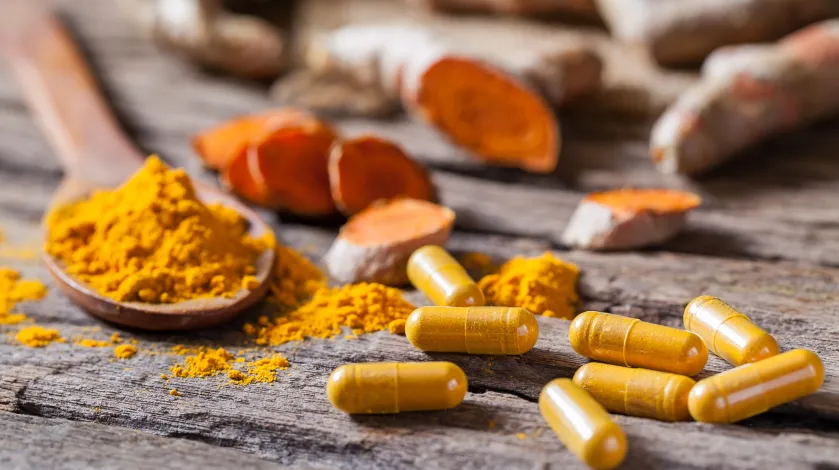If you’re struggling with swelling, joint pain, or stiffness, you might be wondering how to use turmeric for inflammation naturally. This golden spice isn’t just a cooking ingredient—it’s a powerful anti-inflammatory superfood. Curcumin, its active compound, helps reduce oxidative stress and supports the body’s healing process. People have used turmeric for joint pain, natural remedies for inflammation, and curcumin for chronic inflammation for centuries. From teas to tinctures, using turmeric for swelling can help manage discomfort naturally, without harsh side effects. Let’s explore the best ways to include turmeric for inflammation in your daily routine.

Why Turmeric Works for Inflammation
Turmeric contains a bioactive compound called curcumin, which targets inflammation at the molecular level. It blocks NF-kB, a molecule that triggers inflammatory responses in the body. This makes turmeric for joint pain and turmeric for muscle inflammation highly effective. Many people turn to natural anti-inflammatory herbs like turmeric because they want relief without pharmaceutical risks. Daily use of turmeric for swelling also supports immune function, making it a holistic approach to wellness. But curcumin doesn’t absorb well on its own, which is why pairing it with black pepper enhances its power.
How to Take Turmeric for Inflammation
There are several ways to use turmeric for inflammation at home:
a) Golden Milk
Mix 1 teaspoon of turmeric powder with warm milk (plant-based or dairy), a pinch of black pepper, and raw honey. Drink it before bedtime to reduce inflammatory pain and help with sleep.
b) Turmeric Tea
Boil water with fresh turmeric root, ginger, and cinnamon. Add honey and lemon for taste. This natural remedy for inflammation is ideal in the morning.
c) Turmeric Paste
Mix turmeric powder, water, and black pepper to form a paste. Swallow a small amount daily to reduce chronic inflammation naturally.
d) Capsules
Choose high-quality curcumin supplements with black pepper extract. This is the most convenient form of turmeric for joint inflammation.
Whichever form you choose, consistency is key to experiencing the benefits of turmeric for arthritis pain and overall inflammatory relief.

Turmeric Topical Uses
You can also apply turmeric for inflammation externally. Make a paste using turmeric powder, warm coconut oil, and aloe vera gel. Apply it to sore joints, muscles, or swollen areas. It soothes the skin while easing inflammation naturally. This method is especially effective for turmeric for muscle inflammation after workouts. Always do a patch test, as turmeric can stain the skin and may cause irritation in sensitive individuals.
Best Time and Dosage
Take turmeric for inflammation consistently each day. Morning with meals is ideal for maximum absorption. For beginners, start with 500 mg of curcumin with black pepper extract daily. Gradually increase to 1,000 mg based on your body’s response. Natural healing takes time, so commit to a few weeks before expecting major changes in your joint flexibility, pain levels, and overall inflammation.
Foods to Combine with Turmeric
To boost the power of turmeric for inflammation, combine it with:
- Healthy fats like avocado, nuts, and olive oil for better absorption.
- Black pepper, which increases curcumin bioavailability by up to 2,000%.
- Anti-inflammatory foods such as berries, leafy greens, and garlic.
Avoid processed foods and added sugars, which fuel inflammation. A diet rich in anti-inflammatory herbs, including turmeric, creates a strong foundation for long-term wellness.
Safety Tips and Warnings
While turmeric for inflammation is safe for most, there are precautions. High doses can cause nausea or stomach upset. If you’re on blood thinners or have gallbladder issues, consult a doctor before use. Avoid taking more than 2,000 mg of curcumin daily without supervision. Look for organic, third-party-tested turmeric supplements. Stick with food-based remedies when starting out. Remember, moderation and consistency ensure that you enjoy the full benefits of natural anti-inflammatory herbs like turmeric without negative side effects.
Conclusion
Using turmeric for inflammation is simple, natural, and backed by centuries of tradition. Whether you sip it, eat it, or apply it—this golden root has healing power. Try different methods, stay consistent, and let the magic of curcumin for chronic inflammation help your body thrive.
